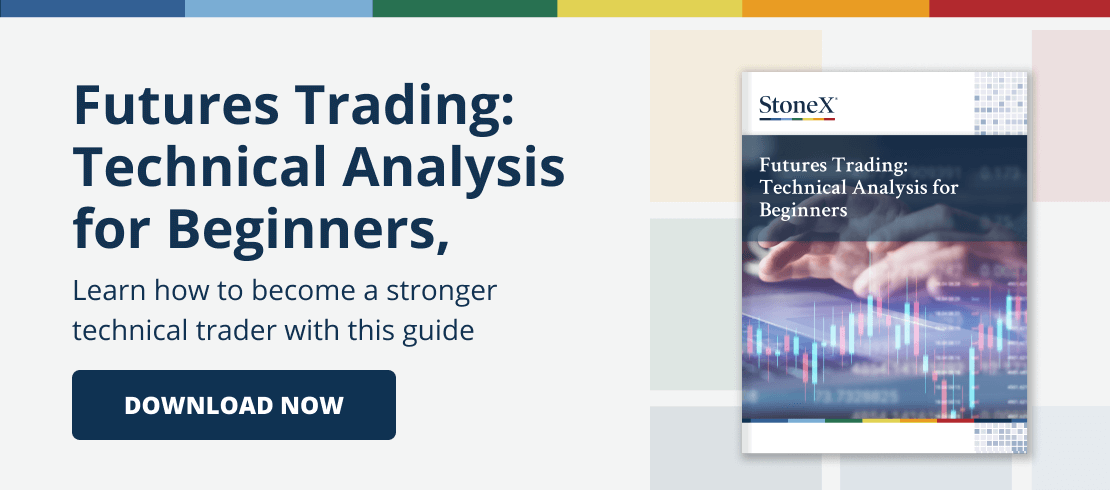Stochastic
The Stochastic Study, developed by George Lane, is an oscillator that compares the difference between the closing trade price of an instrument and the period low, relative to the trading range over an observation time period. With the help of this study, the position of the price quotation within the prevailing fluctuation margins is quantified.
The Stochastic is comprised of two lines, known as the %K line and the %D line. These oscillate between 0% and 100%. The %K line is calculated from the difference between today’s closing price and the period low, divided by the difference between the period high (Highest High) and the period low (Lowest Low). The %D line represent a Simple Moving Average of the %K line, and thus reacts less sensitively than the %K line.
Properties
K. The number of periods in the chart. If the chart displays daily data, then %K Period denotes days; in weekly charts, the period will stand for weeks, and so on. The application uses a default value of 14.
D. The number of periods used in the Moving Average calculation. The application uses a default of 3.
Interpretation
Dr. George C. Lane is the author of the Stochastic study. His basic premise is as follows: during periods of price decreases, daily closes tend to accumulate near the extreme lows of the day. Periods of price increases tend to show closes accumulating near the extreme highs of the day. The Stochastic study is an oscillator designed to indicate oversold and overbought market conditions.
The Stochastic study works similarly to the Relative Strength Index, although the Stochastic ranges between the values of 0% and 100%, and its overbought/oversold boundaries are wider, making this oscillator more volatile. The Stochastic also generates two lines instead of one.
The Stochastic study appears with irregular highs and lows in the chart; the most common period used is 14 bars. In its calculation, two faster lines are used in comparison to the Slow Stochastic. Many investors prefer the Slow Stochastic, since it is smoothed by an additional Moving Average.
The Stochastic study has overbought and oversold zones. Dr. Lane suggests using 80 as the overbought and oversold zones. Some traders, however, prefer 75 and 25.
Dr. Lane also contends the most important signal is the divergence between %D and the contract. He explains divergence as the process where the Stochastic %D line makes a series of lower highs while the commodity makes a series of higher highs. This signals an overbought market. An oversold market exhibits a series of lower lows while the %D makes a series of higher lows. When one of these patterns appear, you should anticipate a market signal. Initiate a market position when the %K crosses the %D from the right-hand side. A right-hand crossover is when the %D bottoms or tops and moves higher or lower and the %K crosses the %D line. According to Dr. Lane, your most reliable trades occur with divergence and when the %D is between 10 and 15 for a buy signal and between 85 and 90 for a sell signal.
Literature
Lane, Dr. George C. Stochastics. Trading Strategies Futures Symposium International. 1984.
Lane, Dr. George C. Lane’s Stochastics. Technical Analysis of Stocks and Commodities magazine. pp 87-90. May/June, 1984.
Murphy, John J. Technical Analysis of the Futures Markets. New York Institute of Finance. Englewood Cliffs, NJ. 1986.
Murphy, John J. The Visual Investor. New York, NY: John Wiley & Sons, Inc. 1996.
Le Beau C., Lucas D. W. Computer Analysis of the Futures Market. 1992.
Kaufman, Perry J. The New Commodity Trading System and Methods. 1987.
View Other Technical Analysis Studies
- Bollinger Bands
- Commodity Channel Index
- Crack Spread
- Crush Spread
- Default
- Directional Movement Index
- Envelope
- Exponential Moving Average
- Exponential Oscillator
- High Low Moving Average
- Highest High / Lowest Low
- Historic Volatility
- Keltner Channel
- Least Squares Linear Regression
- Line Oscillator
- Momentum
- Moving Average
- Moving Average Convergence Divergence
- Moving Standard Deviation
- Open Interest
- Oscillator
- Parabolic Stop and Reversal
- Rate of Change
- Relative Strength Index
- Smoothed Moving Average
- Smoothed Oscillator
- Stochastic
- Variable Moving Average
- Volume
- Volume and Open Interest
- Weighted Close
- What is the Slow Stochastic Oscillator?
- Williams’ %R

